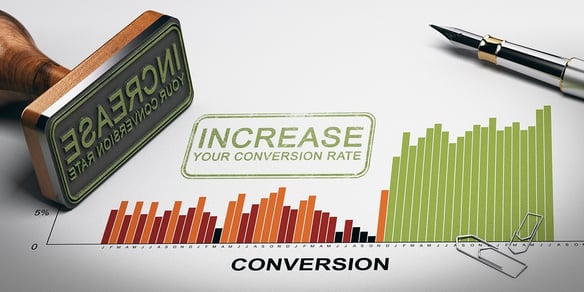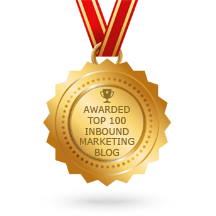
Your website should be more than just an online brochure, it should be your number one marketing tactic for generating leads. The truth, however, is that often websites are neglected by business owners and its power to generate new business leads is not being realised. Because so much of today’s business environment is online, creating compelling and valuable content and offering free tools and resources are all great ways to reach out to, and connect with, potential buyers. However, most websites only target visitors who are ready to be sold to (think buttons like: ‘free quote’ and ‘talk to a sales rep’). What websites aren’t doing is catering for visitors who are just researching and aren’t necessarily ready to speak to a salesperson or buy.
The good news is if you’re having trouble with your lead generation, you’re not alone. Statistics show 80% of marketers say their lead generation efforts are only slightly or somewhat effective. In this guide, I will share with you simple ways to make your website your ultimate marketer, catering to every stage of the buyer’s journey, ultimately generating you more leads and creating more sales.
What is a Lead?
Simply put, a lead is someone who meets the profile of your ideal buyer, has a compelling need, has the budget and has indicated interest in your business’ product or service in some way, shape or form.
What is Lead Generation?
Lead generation is the process of publishing offers that will convert your ideal buyer into a lead. These offers can be anything or at any stage of the buying process. Offers that have been proven to be successful are:
- Subscribe to blog or newsletter
- Download an e-book
- Sign up for a webinar
- Download a free tool
- Take a self-assessment survey
- Book in a free consultation
- Request a quote
Why is Lead Generation Important?
Research shows that people are almost 60% of the way through the buying process before they’re ready to speak to a salesperson. This means that if your website only caters to people who are ready to buy, and not those in the research stage, you will be missing out on the opportunity to help them through the buying process. Connecting with buyers during the early phase of research is important, as it gives you a competitive edge to build a rapport with potential buyers. The best way to do this is to share educational resources that will help them through the buying phase, without being salesy. This will build trust and credibility with your organisation.
How to Generate Leads – Optimising Your Website for Lead Generation
It’s one thing knowing what lead generation is and why it’s important, but it’s another thing putting it into practice. It can be daunting setting up your website and optimising it for lead generation, that is why I’ve put together these simple tips to help you get started.
Offers
An offer is something of value that you promote to people who visit your website. It’s a good idea to provide offers for each stage of the buying process. This basically involves making sure you have relevant offers on every website page. There are different offers that align to the different stages of the buying process, and they are:
- TOFU – Top of funnel
- MOFU – Middle of funnel
- BOFU – Bottom of funnel
Top of the funnel offers and content should be generic in nature. Addressing people’s pain points and needs with helpful and educational solutions.
Middle of the funnel offers and content is where you should introduce and talk about your organisation, share case studies, expertise and processes.
Bottom of the funnel offers and content are designed to get people to convert into customers. This might be as simple as a “buy now” call to action. Or, depending on your business and sales process may require a consultation with a sales person or request a quote.
CTA Buttons
The purpose of the call to action (CTA) button is to take people to a conversion page (landing page). An effective CTA button will get people's attention and motivate them to click on it. To do this your CTA needs to stand out on the page, use contrasting or bright colours, also it should communicate value, set expectations and tell them what to do in as few words as possible. For example, ‘Download the free guide here’. When someone clicks on the button, they should then be taken to a landing page.
Landing Page
The purpose of a landing page is to convert visitors into leads. Here are some tips to a successful landing page:
- Make sure you use the same wording on the landing page as you do on the CTA button, so people know they’re in the right place.
- Communicate value – what can people expect if they take action, how will they benefit, how will it help them?
- Make sure you have a conversion form on the page. The form should request personal information that is equal to the value of the offer for example: a free ebook should only ask for 3 things (first name, last name, email). But a detailed report may ask for a lot more. It is worth testing and measuring as you may find with fewer fields you get a lot of poor quality leads so its worth increasing what you ask for, for example you may add in one extra field like phone number and see how that impacts the quality and quantity of your leads.
- Turn off navigation, you don’t want your visitors to be distracted or leave the page so it is recommended your turn off your main navigation and have no other links on the page.
Conversion Forms
Perhaps the most important thing to remember is the conversion form. Conversion forms should consist of a series of fields that collect information, generally in exchange for an offer. Forms are usually hosted on landing pages, although you can place them anywhere on your website. Forms can work well as a conversion tactic when placed on the page footer or on your blog. An example of a conversion form on a blog could be:
- Tofu – Subscribe to our blog or newsletter (placed in the footer of your website or on your blog)
- Bofu – Get a price, quote, talk to salesperson (placed above your footer)
Thank You Page
Manners are important both online and offline. That’s why it’s a good idea to include a thank you page on your website. The thank you page is the page people are taken to after they convert on a form. The purpose of the thank you page is to set expectations, and reconvert. For example, your thank you page may say something like: ‘Thank you for requesting our e-book on how to convert more website visitors into leads. It will be arriving in your inbox shortly.’ It’s also an excellent time to offer something else that might get visitors to reconvert. It may just be to connect with you on social media, subscribe to your blog, or it could be to invite them to download another e-book, case study or subscribe to a webinar. The thank you page should also include a main navigation panel so people can explore your website and learn more about your company.
I hope this guide has been helpful in showing you how you can generate more leads from your website. By implementing these simple additions to your website, you are unlocking the potential for greater business growth and success today, and well into the future.

